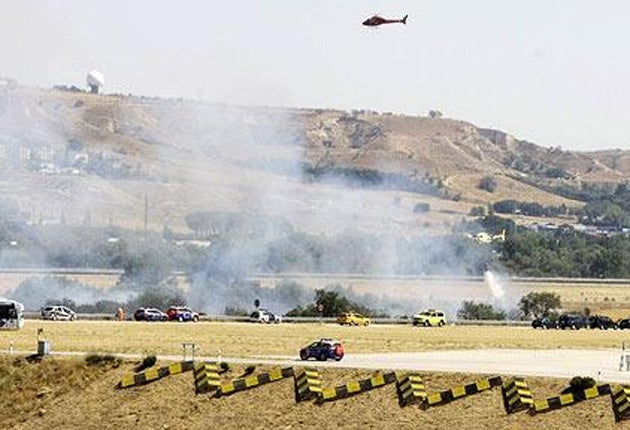The Investigation: A systems failure – or did pilots panic?

Your support helps us to tell the story
From reproductive rights to climate change to Big Tech, The Independent is on the ground when the story is developing. Whether it's investigating the financials of Elon Musk's pro-Trump PAC or producing our latest documentary, 'The A Word', which shines a light on the American women fighting for reproductive rights, we know how important it is to parse out the facts from the messaging.
At such a critical moment in US history, we need reporters on the ground. Your donation allows us to keep sending journalists to speak to both sides of the story.
The Independent is trusted by Americans across the entire political spectrum. And unlike many other quality news outlets, we choose not to lock Americans out of our reporting and analysis with paywalls. We believe quality journalism should be available to everyone, paid for by those who can afford it.
Your support makes all the difference.Investigators examining the causes of the Spanair Flight JK5022 crash will be keen to inspect the plane's black box recorder, which will reveal the exact chain of events that ended with the MD-82 hurtling into a field and catching fire at Madrid's Barajas airport.
They will also be puzzling over how an airline and a plane model with good safety records came to be involved in the first major plane crash in the developed world since 2001.
But the unusual manner in which the plane crashed after temporarily leaving the ground has already caused concern among aviation experts, who have said that a serious system failure or even pilot error could explain the sequence of events.
Though the plane had been serviced at the start of this year and had nine years of perfect performance behind it, safety concerns appeared to have been raised even before take-off. According to the Spanish newspaper El Pais, take-off was delayed by an hour as inspectors examined it after concerns were raised. The take-off was then aborted, and more safety checks took place, according to reports.
Then at about 2.30pm, the crew attempted a second take-off. This time, the plane made it up to its critical speed. It then crossed the "point of no return" line on the runway. Once passed, a take-off must be attempted.
It now seems that the plane managed to climb a few feet off the ground. At that point, witnesses reported seeing flames rising from the plane's left engine, mounted at the rear of the plane behind the wing. The plane thudded to the ground – its high speed taking it off the runway and into woodland. Bound for Las Palmas in the Canary Islands, it would have been heavily laden with fuel. It burst into flames immediately.
If it is confirmed that the plane left the ground during its second take-off attempt, it appears that the crew tried to land immediately – perhaps having noticed something was wrong.
That has confused aviation experts. Modern planes are able to take off when they are hampered by a major problem, such as the failure of an engine. Standard flying procedure dictates that once a pilot has reached a critical point, they must attempt a full take-off, even if they are aware of a problem.
The fact that the pilots felt it necessary to land the plane immediately suggests two possible chains of events, according to an aviation safety expert, Todd Curtis, of AirSafe.com. "First, it could be that something further had gone wrong with the plane after the engine exploded – another system may have gone down or there could have been a total loss of power," he said. "Second, it could be that pilots noticed something wrong and had been panicked into taking a course of action that was very unusual. That would be a pilot mistake."
Witnesses said the plane had broken up after coming to rest. By that time, billows of choking smoke were pouring out of it.
The engine fire could have been brought about by a number of causes – a piece of debris from the runway, an internal explosion or even a bird being sucked into it. When the plane came to a halt near Terminal 4, the way it tilted and broke into two pieces may have obstructed passengers trying to flee from exits.
The MD-82 is a plane familiar to millions of holiday-makers around Europe. It is a model regularly used for short-haul flights in the continent. Its safety features are also typical, with emergency exits placed at the front and rear and over the wings.
According to statistics by AirSafe.com, the MD-80 series has a good safety record overall, with 0.24 incidents occurring every million flights. But despite its good record in Europe, the MD-82 does not have a perfect safety record around the world. The different variations of the model, built by Boeing, have been involved in 14 incidents since 1981, according to safety analysts.
The most recent incident involving a MD-82 came last September, when a plan crashed during a flight from Bangkok to Phuket. It skidded off the runway during its landing in difficult weather conditions. After hitting trees, it burst into flames. There were 123 passengers on board, 85 of whom were killed.
Join our commenting forum
Join thought-provoking conversations, follow other Independent readers and see their replies
Comments